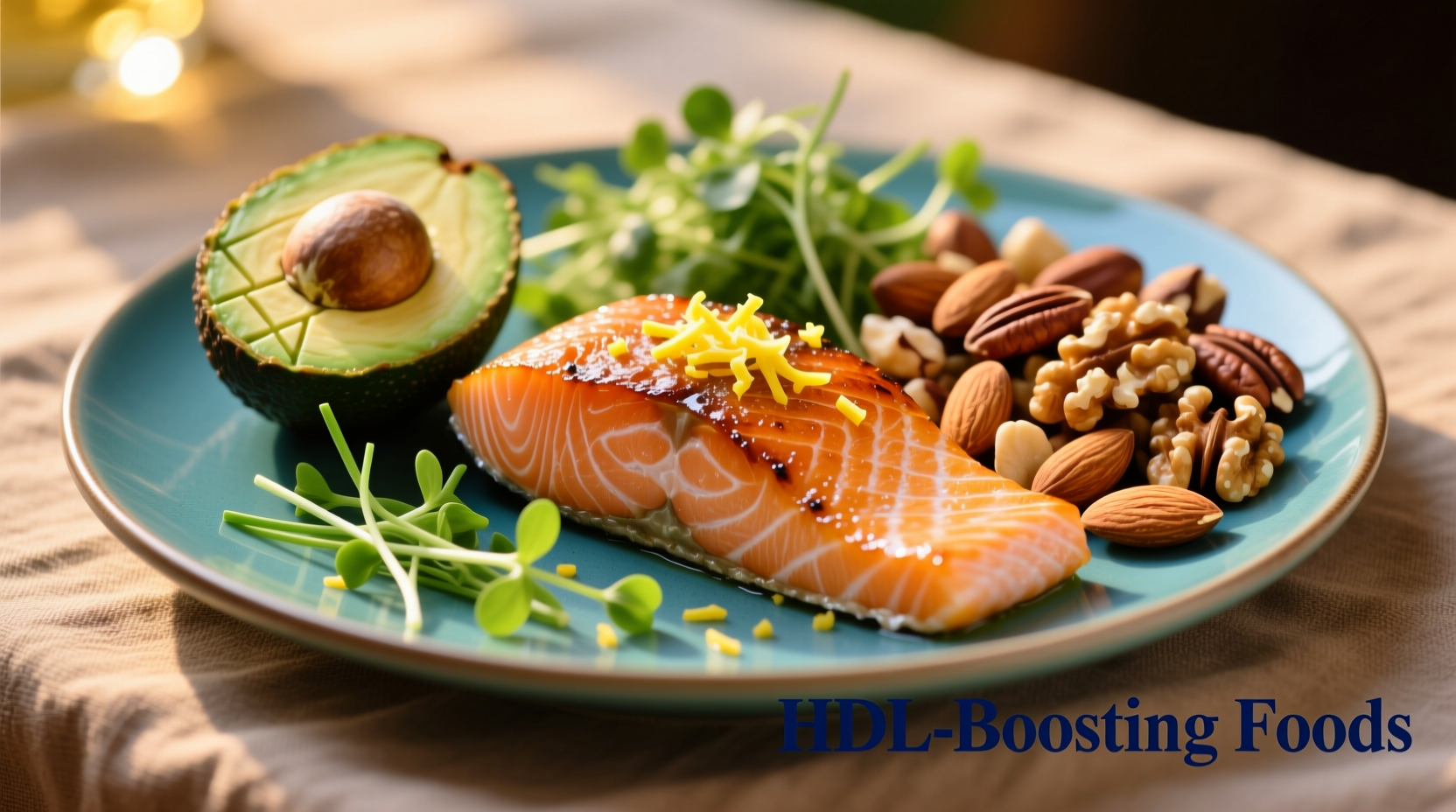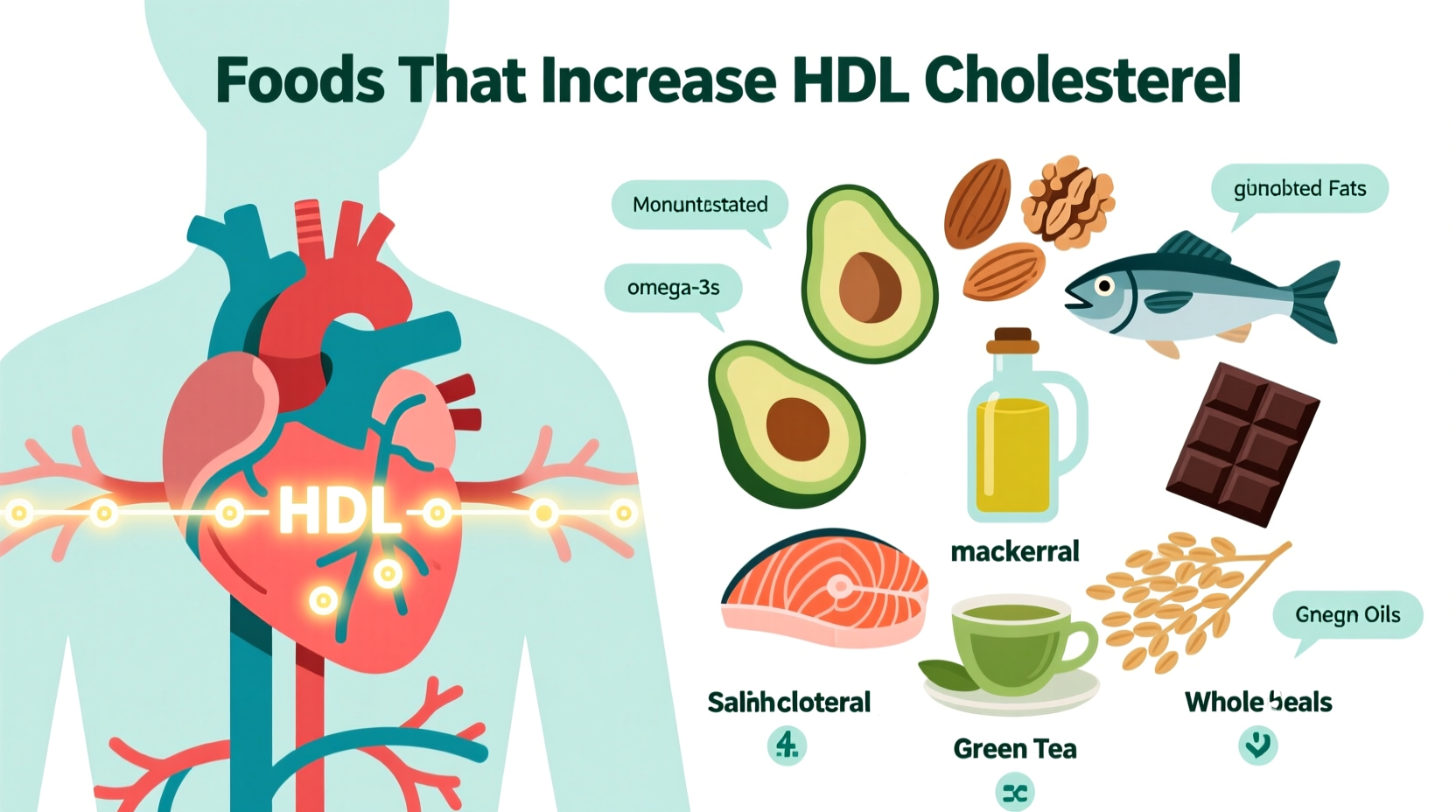If you're searching for what foods have HDL, there's an important clarification: no foods contain HDL cholesterol directly. HDL (High-Density Lipoprotein) is produced by your body, not found in foods. However, specific dietary choices can significantly increase your HDL levels. This evidence-based guide reveals exactly which foods boost HDL, how they work, and practical ways to incorporate them into your daily routine for better heart health.
Understanding HDL: The Good Cholesterol You Can Influence Through Diet
Many people mistakenly believe certain foods "contain" HDL cholesterol. In reality, HDL is manufactured by your liver and circulates through your bloodstream, acting as a cholesterol scavenger that removes harmful LDL particles from your arteries. While genetics play a role in your HDL levels, research shows that strategic food choices can increase your HDL by 5-10% within weeks.
According to the American Heart Association, HDL levels below 40 mg/dL for men and 50 mg/dL for women increase cardiovascular risk. The good news? Your fork is one of your most powerful tools for improving these numbers.

The Top Food Categories That Increase HDL Levels
Fatty Fish: Omega-3 Powerhouses
Fatty fish contain EPA and DHA omega-3 fatty acids that trigger your liver to produce more HDL particles. A NIH study found that consuming fatty fish 2-3 times weekly increased HDL by 4% while reducing triglycerides.
- Salmon (wild-caught preferred): 3.5 oz provides 1.8g omega-3s
- Mackerel: Highest omega-3 content of any fish
- Sardines: Also rich in vitamin D which supports HDL function
- Herring: Contains both omega-3s and selenium for heart protection
Pro tip: Bake or grill instead of frying to preserve heart-healthy fats. Aim for 8 ounces total per week.
Monounsaturated Fats: The Mediterranean Secret
The landmark PREDIMED study published in Circulation demonstrated that a Mediterranean diet rich in monounsaturated fats increased HDL by 5% compared to low-fat diets. These fats improve HDL's ability to remove arterial plaque.
| Food Source | HDL-Boosting Compound | Recommended Daily Amount |
|---|---|---|
| Olive oil (extra virgin) | Oleic acid, polyphenols | 2-4 tbsp |
| Avocado | Monounsaturated fats, fiber | ½-1 whole |
| Almonds | Vitamin E, healthy fats | 1 oz (23 nuts) |
| Macadamia nuts | Monounsaturated fat density | 1 oz (10-12 nuts) |
Foods That Lower HDL: What to Limit
While adding HDL-boosting foods helps, avoiding certain items is equally important. The Centers for Disease Control identifies these dietary culprits that actively reduce HDL levels:
- Trans fats: Found in fried foods and many processed snacks, trans fats lower HDL by up to 8% according to Harvard research
- Refined carbohydrates: White bread, pastries, and sugary cereals can decrease HDL while increasing triglycerides
- Excessive alcohol: While moderate consumption (1 drink/day for women, 2 for men) may raise HDL, exceeding these amounts has the opposite effect
Your 7-Day HDL-Boosting Meal Plan
Implementing these foods doesn't require drastic changes. This practical plan shows exactly how to incorporate HDL-boosting foods into your existing routine:
Breakfast Solutions
- Monday: Greek yogurt with walnuts and berries (walnuts provide ALA omega-3s)
- Wednesday: Avocado toast on whole grain bread with olive oil drizzle
- Saturday: Scrambled eggs with spinach and smoked salmon
Lunch & Dinner Strategies
- Replace butter with avocado in sandwiches
- Use olive oil-based dressings instead of creamy alternatives
- Add a handful of almonds to salads for crunch and HDL benefits
- Choose fish tacos with cabbage slaw over fried options twice weekly
Realistic Expectations: How Much Can Diet Improve HDL?
Many people wonder how quickly can foods increase HDL. Based on clinical evidence from the Mayo Clinic, here's what to expect:
- Noticeable HDL improvements typically appear in 4-8 weeks
- Diet alone usually increases HDL by 5-10% (medication may be needed for larger increases)
- Combining these foods with regular exercise can double the HDL-boosting effect
- Maintaining these dietary changes provides ongoing cardiovascular protection
Remember that individual responses vary based on genetics, current health status, and overall dietary pattern. The Mediterranean diet pattern—which emphasizes these HDL-boosting foods—shows the most consistent results across diverse populations.
For optimal heart health, focus on consistent dietary patterns rather than single "superfoods." The synergy between these HDL-boosting foods creates greater benefits than any single item alone. Pair these dietary changes with regular physical activity for maximum cardiovascular protection.











 浙公网安备
33010002000092号
浙公网安备
33010002000092号 浙B2-20120091-4
浙B2-20120091-4